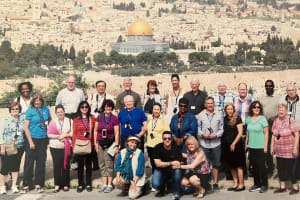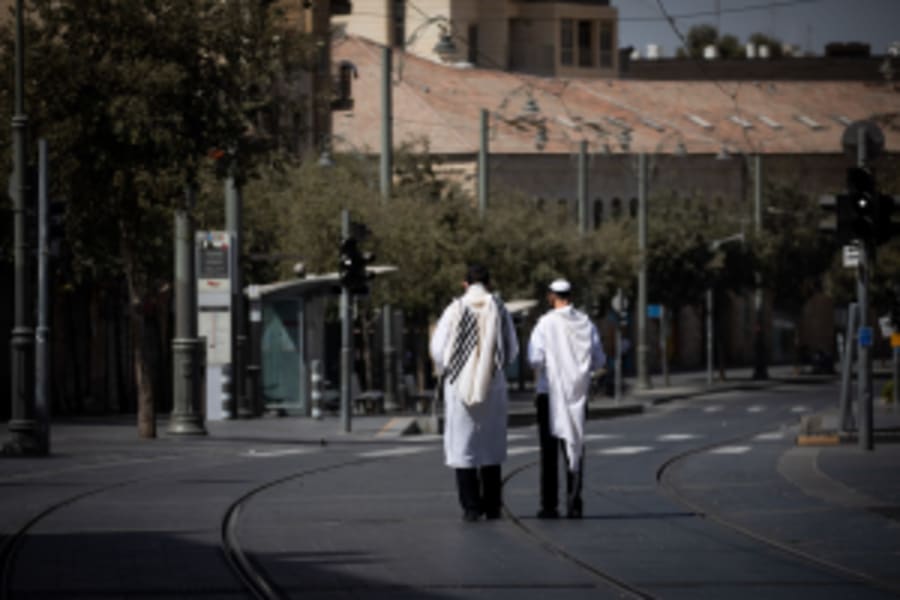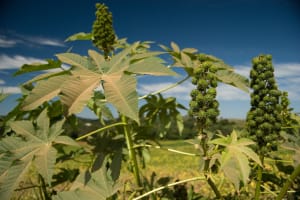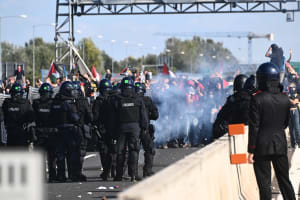Christian Arab town of Taybeh and the biblical history behind it

Taybeh has been in the news recently, but all the tensions surrounding the little Christian town have only served to highlight the historic place and its significance as a place to which Jesus once fled. ALL ISRAEL NEWS visited the ancient church there with licensed tour guide, Levi Simon.
Approximately 13 kilometers (8 miles) north of Jerusalem, Taybeh is mentioned in the Bible as “Ophrah” and served as a strategic stronghold for the tribe of Benjamin during the Iron Age. In the New Testament, Ophrah is called “Ephraim” and described as a town that provided refuge for Jesus and His disciples shortly after He raised Lazarus from the dead. Today, Palestinian Christians live and worship there, but the biblical significance goes all the way back to the time of the Judges.
In Judges 6:11, we read that the angel of the Lord came and sat under the terebinth at Ophrah, a tree that belonged to Joash the Abiezrite. Meanwhile, Gideon, the son of Joash, was “beating out wheat in the winepress to hide it from the Midianites.”
During the tour, Simon showed ALL ISRAEL NEWS correspondent, Oriel Moran, some of the ancient ruins from the time of Gideon. “Over here, there's a little waterhole, some steps which are carved into the rock,” he explained, adding that Gideon was both a leader and a prophet for the people of Israel.
“In a beautiful way, about 1,200 years later, there's a story of this man called Jesus in the land,” Simon shared, making the link with Jesus who is both priest, prophet, and king.
In the Book of John 10:54, it says that Jesus no longer walked openly among the Jewish authorities who were planning to put him to death, but that He went to what is described as “the region near the wilderness, to a town called Ephraim,” where He stayed with His disciples.
The town has become a sacred site, and from Byzantine times there has been a church at that location. Simon pointed out the remains of a monastery built on top of the ancient town of Ophrah and a little sanctuary room where people would light candles. Ancient columns and the capitals are still visible, along with a simple mosaic floor from the time of the early church.
The atrium, entrance, and apse of the original structure are still visible, with the apse oriented eastward toward the Mount of Olives – symbolizing the anticipation of the Messiah’s return. Byzantine style crosses and baptismal basins for children testify to the church’s history where Christians have continued to pray in the same spot for the past 1,700 years. Simon marveled at the thought of all the prayers that have been offered up over the ages from the Taybeh church, saying, “The accumulation of thousands of prayers has so much power in these places in and around Jerusalem.”
Wandering around the ancient structure with the remains of arches, windows, and reminders of the holy place that has seen such significant events, Simon told Moran about a tradition in Israel. “They have this saying here in Israel that a holy place stays a holy place, even if it changes religion. And it's very true,” he said.
Whether it’s a church at the top of Mount Carmel where Elijah fought the prophets of Baal, or the Taybeh church on top of the spot where the Angel of the Lord met Gideon, the ground remains revered.
“You can connect to the biblical stories by seeing the views that they would have seen, seeing the military strategy, the strategic military positions which they would have placed themselves. Many times God then intervenes and gives different sorts of strategies of how to attack… by standing here, we could understand why that would be the best thing, and that really can connect us to the Word of God,” Simon explained.
Moran noted that God gives different instructions at different times, sometimes calling people to fight, and other times to flee. In the story of Lazarus, Jesus didn’t fight back against the authorities but went to lie low in the town of Ephraim for a while.
In the past, Taybeh would have been a strategic location for a military outpost, featuring a covered water cistern, surrounding walls, and a commanding view of the surrounding area.
“Gideon, who is a prophet and a military leader, he comes here and he battles the Midianites,” Simon explained. “He sets up security outposts to make sure that his city that becomes Ophrah is secure,” he added, saying that they would have taken it in turns throughout the heat of the day and cold of the night to keep watch and guard the city from attack.
Simon showed Moran a well-preserved guard tower from 2,000 years ago. “You can see the size of the rocks at the bottom,” he said, pointing to the base of the walls that were constructed with no mortar, an indication that it was probably from the time of the second temple. “It was a guard tower and probably also a storage room for grains for the farmers in the area. So this was sort of the agricultural base to supply the city with food,” he explained.
With the tensions and troubles surrounding sites such as Taybeh, it is important to go with caution, and above all with a registered guide.
Moran also suggested, “Pray and think before you go,” adding encouragement to follow the example of Jesus, praying and responding to God’s guidance to each particular situation, not only in Taybeh but in all the challenges we may face in life.

Jo Elizabeth has a great interest in politics and cultural developments, studying Social Policy for her first degree and gaining a Masters in Jewish Philosophy from Haifa University, but she loves to write about the Bible and its primary subject, the God of Israel. As a writer, Jo spends her time between the UK and Jerusalem, Israel.
You might also like to read this:














